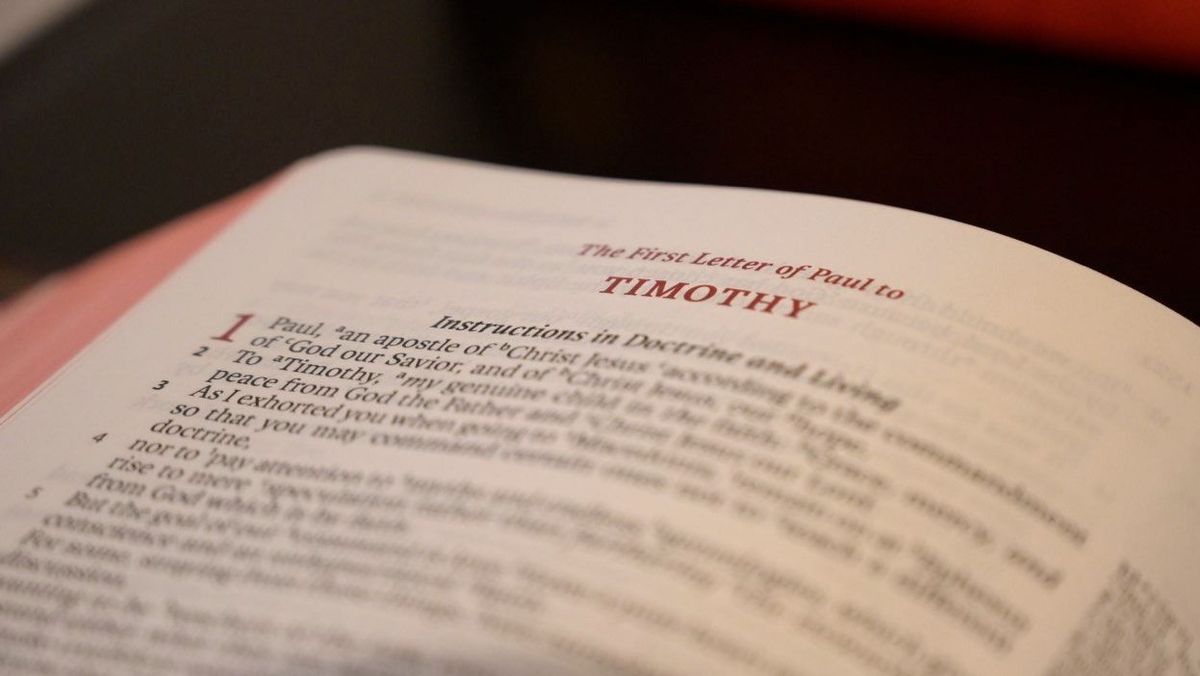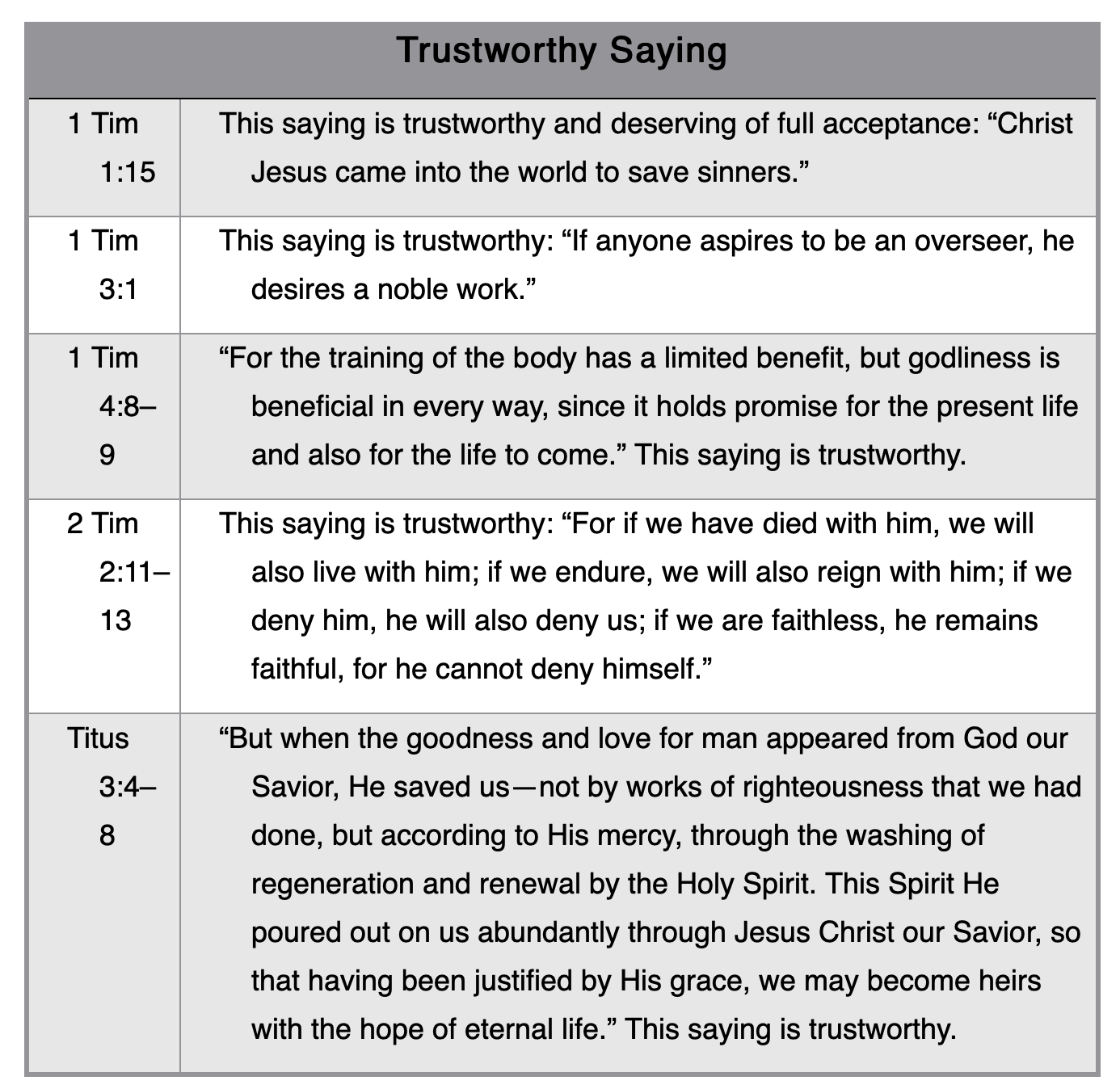Questions About the Letters to Timothy and Titus
Answers to common questions asked about introductory issues concerning the letters written to Timothy and Titus.

Is it proper to call 1 and 2 Timothy and Titus "Pastoral Epistles"?
The designation "Pastoral Epistles" dates back to D.N. Berdot, who called Titus a "Pastoral epistle" in 1703, and P. Anton of Halle, who delivered a series of lectures on 1 and 2 Timothy and Titus entitled "The Pastoral Epistles."[1]
While Timothy and Titus were lead pastors of local congregations, their roles were not that of a permanent, resident pastor of a church. Timothy and Titus were Paul's apostolic delegates who were likely temporarily assigned to their locations to deal with particular problems that had arisen and needed special attention.[2]
Therefore, the letters to Timothy and Titus are not merely letters advising young ministers or manuals of church order.
Which of the three letters was written from prison?
It appears that Paul wrote 1 Timothy and Titus after his release from his first Roman imprisonment but before a second, more severe Roman imprisonment. During their second imprisonment in Rome, Paul wrote 2 Timothy, the last of his letters included in the canon.
When did scholars begin to question Paul's authorship of these letters?
The authenticity of Paul's correspondence with Timothy and Titus went unchallenged until the nineteenth century. In the nineteenth century, commentators alleged that these letters to Timothy and Titus were pseudonymous. They postulated that a later follower of Paul attributed his own work to Paul in order to perpetuate that person's teaching and influence.[3]
What is the genre of the letters to TImothy and Titus, and what implications does this have?
Paul's letters to Timothy and Titus conform to the standard format of an ancient letter (opening salutation, body with thanksgiving and the main content, and a closing greeting). These letters are examples of a paraenetic or hortatory letter which contains moral exhortations to its recipient. These letters are compared to "mandate" or "administrative" documents, in which an official sets forth instructions for a newly appointed delegate regarding his administrative duties.
While the letters to Timothy and Titus are addressed to an individual, they were meant for a larger audience as indicated by the plural pronoun which closes each epistle. These letters are also bound to the historical life-setting of Paul's ministry as set forth in Acts and Paul's Letters. These letters contain norms that are especially germane to the issues of life in the church, the "household of God."[4]
2 Timothy is Paul's last recorded letter written from a severe Roman imprisonment with Paul's martyrdom imminent. Therefore, it takes on the character of a last testament similar to 2 Peter.
How many church offices are prescribed in the letters to Timothy and Titus?
There are two distinct church offices prescribed in the letters to Timothy and Titus. The first is the "overseer" or "elder." The second is that of deacon.
There is debate as to the presence of qualifications for "women" in 1 Timothy 3:11. Some believe it refers to women married to deacons (deacons' wives). Others believe these are women who are themselves serving as deacons (deaconesses).
What is the likely meaning of the phrases "the husband of one wife" (1 Tim 3:2) and "husbands of one wife" (1 Tim 3:12; Titus 1:6)?
Some understand this expression to prohibit (1) polygamy, (2) remarriage after a divorce, or (3) marital infidelity. The third option, marital faithfulness, seems to fit Paul's focus best since this expression is used to describe the qualifications of widows in 1 Timothy 5:9.
Paul is not banning single men from the office of elder, since both he and Barnabas were apparently unmarried during their ministry (1 Cor 9:5). Therefore, this expression communicates the need that the elder's sexual conduct must be exemplary in purity whether he is married or not.
Which important theme in the letters to Timothy and Titus helps the reader understand Paul's reference to women being "saved through childbearing" (1 Tim 2:15)?
The theme of salvation is helpful in understanding Paul's reference to women being "saved through childbearing" in 1 Timothy 2:15. It is unlikely to mean "brought safely" (physically preserved through the process of childbirth). Paul uses his normal word meaning "redemption from sin," thereby contrasting being deceived into sin (v.14) with being saved from it. [Reformation Study Bible]
The interpretation "through the birth of the Child" (Jesus), attractive theologically, is doubtful. Paul intends another allusion to Genesis, this time to God's statement to Eve after the fall concerning her role in childbearing (Gen 3:16).
Paul is teaching that even though a woman bears the stigma of being the initial instrument who led the race into sin, it is women through childbearing who may be preserved or freed from that stigma by raising a generation of godly children. [MacArthur Study Bible]
People are saved as they persevere (continue) in the faith to carry out the Lord’s calling in their life, one example being the unique role of women in childbearing. [ESV Study Bible]
What are the qualifications of church leaders (1 Tim 3:1–7; Titus 1:6–9)?
- Above reproach
- One-woman men (faithful husbands)
- Self-controlled
- Sensible
- Respectable
- Hospitable
- Able to teach
- Not addicted to wine
- Not violent
- Gentle
- Not quarrelsome
- Not greedy
- Good managers of their own households with their children in submission
- Not a new convert
- Good reputation with those outside the church
What is meant by the authors' designation "trustworthy sayings"?
Five statements in the letters to Timothy and Titus (at least one in each letter) are designated by the author as "trustworthy sayings" (pistos ho logos, lit "trustworthy [is] the saying"). This feature provides cohesion for this group of letters. Two of the five have the formula after the referent (1 Tim 4:8; Titus 3:4–7).
The range of meaning of "trustworthy sayings" in these letters includes the following:
- possible adaption of a saying of Christ Jesus (1 Tim 1:15)
- solemn apostolic affirmation about church leadership (1 Tim 3:1)
- apostolic pronouncement about the value of godliness (1 Tim 4:8)
- hymn-life, artistically crafted affirmation of God's faithfulness in teh face of human faithlessness (2 Tim 2:11–13)
- summary of Paul's soteriology in trinitarian terms (Titus 3:4–7)
What contribution do 1–2 Timothy and Titus make to the canon?
These letters speak of our Savior God and salvation in Christ (1 Tim 2:3–4; 4:10; 2 Tim 1:10; Titus 1:3–4). They give qualifications for church leaders (1 Tim 3:1–12; Titus 1:6–9) and instructions on the role of women in the church (1 Tim 2:9–15). They emphasize the preservation of sound doctrine and refutation of false teachers (1 Tim 4:16). They highlight the importance of pursuing godliness, self-control, and Christian virtue (1 Tim 4:11–16; 6:6; 2 Tim 2:22).
Andreas J. Köstenberger, L. Scott Kellum, and Charles L. Quarles, The Cradle, the Cross, and the Crown: An Introduction to the New Testament, 2nd ed (Nashville, TN: B & H Publishing Group, 2016), 717. ↩︎
Gordon D. Fee, 1 and 2 Timothy, Titus, NIBCNT 13 (Peabody, MA: Hendrickson, 1988), 21. ↩︎
Köstenberger, Kellum, and Quarles, 719–720. ↩︎
Köstenberger, Kellum, and Quarles, 735–737. ↩︎





Comments ()